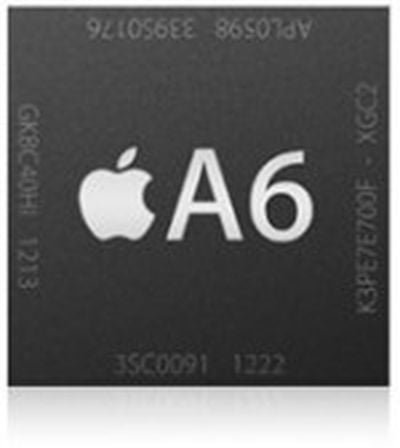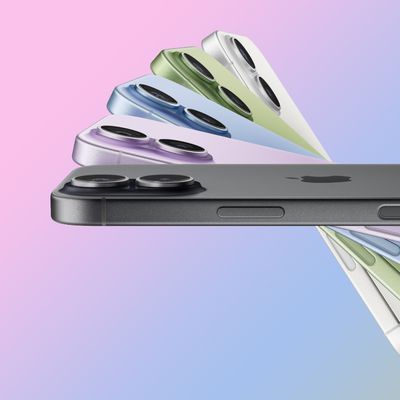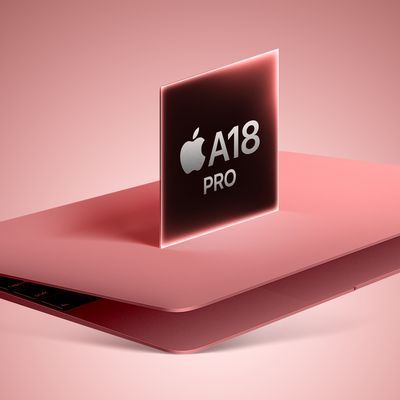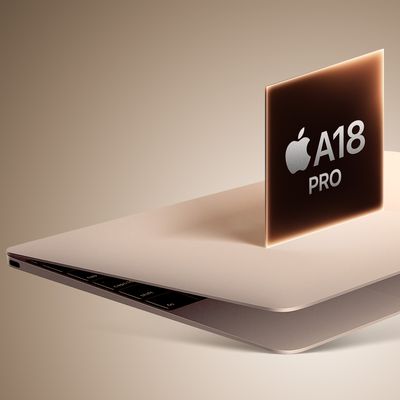Overview of Apple's A6 Chip Development and Future Plans
 Semiconductor analyst Linley Gwennap has posted an interesting overview (via CNET) of the series of events that led to Apple's A6 system-on-a-chip, the company's first entirely custom ARM chip design. The report notes that Apple has likely spent in excess of $500 million on the project when including the purchase prices of chip firms P.A. Semi and Intrinsity.
Semiconductor analyst Linley Gwennap has posted an interesting overview (via CNET) of the series of events that led to Apple's A6 system-on-a-chip, the company's first entirely custom ARM chip design. The report notes that Apple has likely spent in excess of $500 million on the project when including the purchase prices of chip firms P.A. Semi and Intrinsity.
At this point, Apple has spent about $400 million to buy PA Semi and Intrinsity, tens of millions for a license to design its own ARM CPUs, and probably north of $100 million to support its CPU design efforts over the past four years. It appears that the end result will be that Apple ships a Cortex-A15-class CPU about three months before arch-enemy Samsung does. These three months happen to come during the big holiday buying season, during which the iPhone 5 could generate $25 billion in revenue. So that half billion dollars could be money well spent.
The report traces Apple's ARM-based chip development back to its 2008 acquisition of P.A. Semi. Beyond its license to use ARM cores, Apple's acquisition of P.A. Semi led the company to also obtain a rare license to develop its own ARM-based CPUs, as had been rumored in mid-2008. Apple then split the P.A. Semi team into two groups to focus on what would become the A4 system-on-chip and to build Apple's own ARM implementations.
While one group of PA Semi employees set to work on the Apple A4 processor using an ARM CPU core, another group began defining the microarchitecture for the new CPU. According to one source, Steve Jobs initially set an “insanely great” bar for the performance of the new CPU, but he eventually realized that his CPU team was limited by the same laws of physics that apply to everyone else. For whatever reason, the project took a long time to get through the initial definition and design phase.
As Apple iterated on standard ARM solutions for the A4, A5, and A5X, it continued to press forward on its own A6, which reportedly saw design completion in early 2010 and physical design work wrapping up about a year later. With the first samples of the A6 being delivered to Apple in the summer of 2011, the company continued to put the chip and its production processes through extensive testing ahead of full production started earlier this year for the iPhone 5.
The report notes that Apple is likely to follow a typical two-year design cycle with its own chips, working on a 64-bit ARMv8 solution for launch in 2014. As a result, Apple's 2013 devices will likely use ramped-up variants of the current A6 design, perhaps by moving from a dual-core CPU to a quad-core processor or by boosting the graphics capabilities of the package as the company did for the A5X in the third-generation iPad.
Popular Stories
Apple is not expected to release a standard iPhone 18 model this year, according to a growing number of reports that suggest the company is planning a significant change to its long-standing annual iPhone launch cycle.
Despite the immense success of the iPhone 17 in 2025, the iPhone 18 is not expected to arrive until the spring of 2027, leaving the iPhone 17 in the lineup as the latest...
Language learning app Duolingo has apparently been using the iPhone's Live Activity feature to display ads on the Lock Screen and the Dynamic Island, which violates Apple's design guidelines.
According to multiple reports on Reddit, the Duolingo app has been displaying an ad for a "Super offer," which is Duolingo's paid subscription option.
Apple's guidelines for Live Activity state that...
Apple is planning to release a low-cost MacBook in 2026, which will apparently compete with more affordable Chromebooks and Windows PCs. Apple's most affordable Mac right now is the $999 MacBook Air, and the upcoming low-cost MacBook is expected to be cheaper. Here's what we know about the low-cost MacBook so far.
Size
Rumors suggest the low-cost MacBook will have a display that's around 13 ...
Govee today introduced three new HomeKit-compatible lighting products, including the Govee Floor Lamp 3, the Govee Ceiling Light Ultra, and the Govee Sky Ceiling Light.
The Govee Floor Lamp 3 is the successor to the Floor Lamp 2, and it offers Matter integration with the option to connect to HomeKit. The Floor Lamp 3 offers an upgraded LuminBlend+ lighting system that can reproduce 281...
Belkin today announced a range of new charging and connectivity accessories at CES 2026, expanding its portfolio of products aimed at Apple device users.
UltraCharge Pro Power Bank 10K with Magnetic Ring
The lineup includes new Qi2 and Qi2.2 wireless chargers, magnetic power banks, a high-capacity laptop battery, and USB-C productivity accessories, with an emphasis on higher charging...
Now that the calendar has flipped over into January, steep discounts on popular Apple products have become more rare after the holidays. However, if you didn't get a new pair of AirPods recently and are looking for a model on sale, Amazon does have a few solid second-best prices this week.
Note: MacRumors is an affiliate partner with some of these vendors. When you click a link and make a...
Apple plans to introduce a 12.9-inch MacBook in spring 2026, according to TrendForce.
In a press release this week, the Taiwanese research firm said this MacBook will be aimed at the entry-level to mid-range market, with "competitive pricing."
TrendForce did not share any further details about this MacBook, but the information that it shared lines up with several rumors about a more...
The company behind the BlackBerry-like Clicks Keyboard accessory for the iPhone today unveiled a new Android 16 smartphone called the Clicks Communicator.
The purpose-built device is designed to be used as a second phone alongside your iPhone, with the intended focus being communication over content consumption. It runs a custom Android launcher that offers a curated selection of messaging...
 Semiconductor analyst Linley Gwennap has posted an interesting overview (via CNET) of the series of events that led to Apple's A6 system-on-a-chip, the company's first entirely custom ARM chip design. The report notes that Apple has likely spent in excess of $500 million on the project when including the purchase prices of chip firms P.A. Semi and Intrinsity.
Semiconductor analyst Linley Gwennap has posted an interesting overview (via CNET) of the series of events that led to Apple's A6 system-on-a-chip, the company's first entirely custom ARM chip design. The report notes that Apple has likely spent in excess of $500 million on the project when including the purchase prices of chip firms P.A. Semi and Intrinsity.























